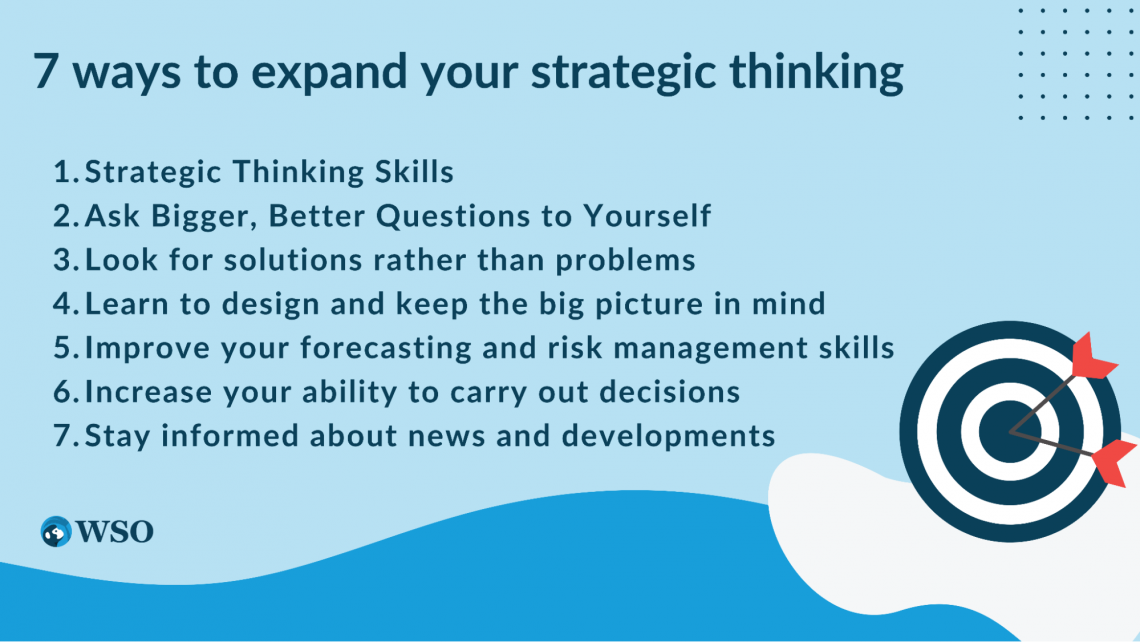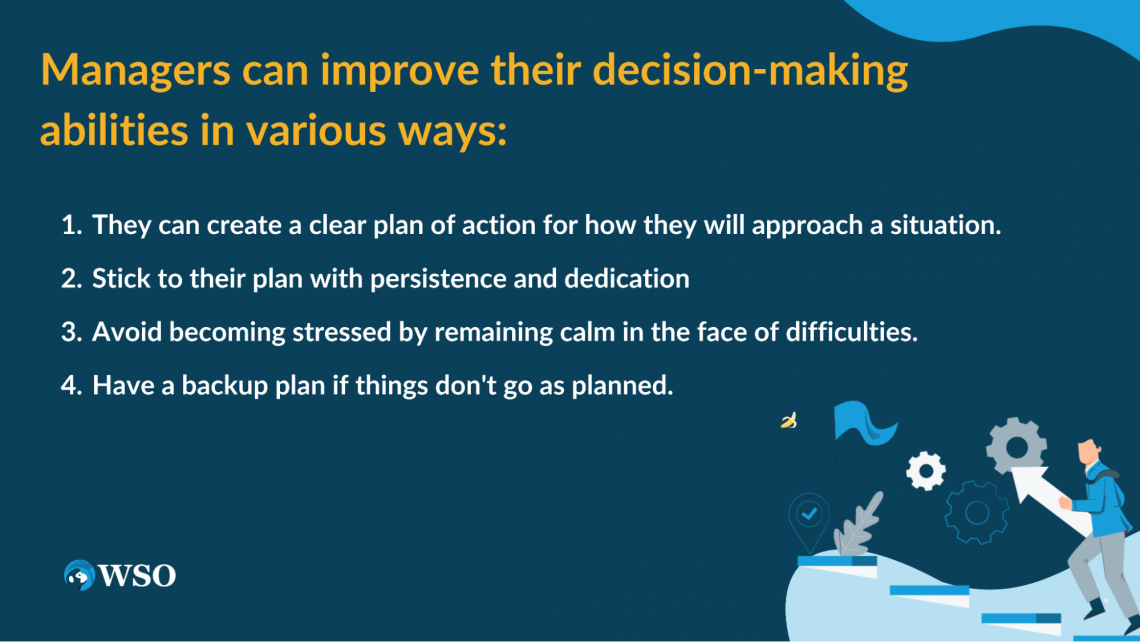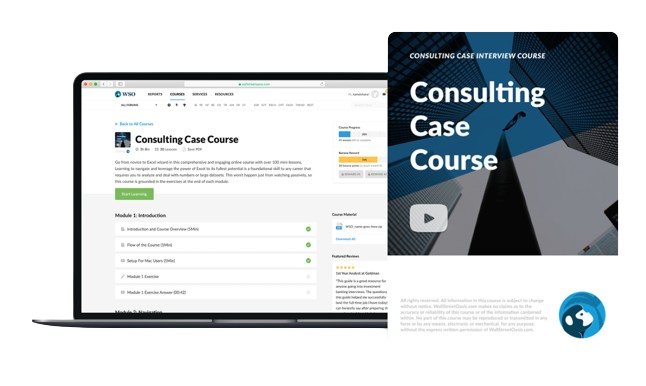7 Ways to Expand Your Strategic Thinking
Make effective decisions that align with short-term and long-term goals.
There are many reasons why you should be a more strategic thinker. You might want to improve your business skills or have a better direction in your personal life. You must consider the big picture regardless of why you want to improve your strategy. When you think strategically, you can visualize various outcomes.
You can easily plan for the future. This may need some practice and you to step outside of your comfort zone. You will have to be consistent then only your strategic mindset will improve over time.

What exactly is Strategic Thinking?
Strategic thinking is a rational thought process. It focuses on the examination of factors that will influence long-term success. It results in a clear set of goals and new ideas to survive in a competitive environment. This type of thinking must consider economic realities, market forces, and available resources.
1. Strategic Thinking Skills
Strategic thinking skills are abilities that enable you to solve complex problems. These abilities help to plan and achieve business objectives, overcome obstacles, and address challenges.

Strategic thinking skills include:
| Analytical skills | To develop a strategy that will help your organization. You must be able to analyze a wide range of inputs. For example, financial statements, key performance indicators (KPIs), and market conditions. This skill will develop a strategy that is in line with your organization. |
|---|---|
| Communication skills | Developing a strategy for your company, regardless of size, necessitates strong communication skills. It requires the ability to communicate complex ideas and collaborate with stakeholders. Also, building consensus and ensuring everyone is working towards common goals. |
| Problem-solving skills | Strategic planning addresses problems such as missed corporate goals or a new competitor. You must implement a strategy that addresses the primary challenge you face. Also, ensure you understand the problem and potential solutions. You can then devise a strategy to solve the problem. |
| Management and planning skills | Strategy is more than just coming up with a solution; it also includes putting it into action. After the data analysis and identification of the problem and the solution, you need strong planning and management skills. It will help you to bring everything together. |
2. Ask Bigger, Better Questions to Yourself
Strategic thinkers question their assumptions and examine problems from distinct viewpoints. The classic six thinking hats methods are an excellent way to achieve this:
- White Hat: When wearing this thinking hat, you concentrate on what you can learn from available data and current and historical trends.
- Red Hat: You use your gut feelings and emotion to look at problems through the lens of feelings (yours and others).
- Black Hat: This is the hat of forewarning. Look for weak points and consider how to create backup plans to address them.
- Yellow Hat: Assists you in seeing the bright side. What is the most positive point of view?
- Green Hat: Displays creativity and out-of-the-box thinking.
- Blue Hat: This hat represents processes and encourages you to organize and structure your thoughts.
3. Look for solutions rather than problems
Strategic thinkers don't just point out problems but also suggest solutions. For instance, they can give solutions to automate business processes like paystub, etc. They arrive at the table with proposals and plans for how to proceed. They discuss what is going well, what could be better, and what is possible.
Taking a solution-oriented approach necessitates becoming acquainted with uncertainty. It entails lowering your inner perfectionist's defenses to avoid mistakes and failure.
4. Learn to design and keep the big picture in mind
The first step in developing any strategy is to define the overall goal. What is the big picture you want to achieve? If you want to improve your strategic thinking abilities, you must learn how to design and focus on the big picture.

You can use this skill to take a holistic view of your objectives. You must assess your strengths and weaknesses. You must also develop a plan of action to help you achieve your goals.
Furthermore, you can identify opportunities and threats by viewing your goals from a macro perspective. It will help you to devise preventive actions to mitigate them. As a result, focusing on the big picture will better prepare you to make informed decisions. All this will help your company succeed.
5. Improve your forecasting and risk management skills
Improving your ability to forecast and manage risk is one of the most important steps to improve your strategic thinking skills.
Identifying potential risks allows you to plan better how to mitigate them. Anticipating potential issues and taking corrective action will enable you to protect your interests from major setbacks.
You can also stay afloat during turbulent times by managing and monitoring risk. A better understanding of the risks associated with a decision will prevent one from making mistakes.
6. Increase your ability to carry out decisions
Improving strategic thinking skills involves various factors. Managers who can execute their plans will be better positioned to think when making decisions.
Moreover, managers can improve their decision-making abilities in various ways.
- They can create a clear plan of action for how they will approach a situation.
- Stick to their plan with persistence and dedication.
- Avoid becoming stressed by remaining calm in the face of difficulties.
- Have a backup plan if things don't go as planned.
7. Stay informed about news and developments
Join networks, read widely, interact with staff members from various teams inside your company, and seek everywhere you can for hints of emerging trends and concepts.
Recognize how your function operates in the confines of your workplace and, more broadly, in organizations worldwide. Look for mentors and subject-matter experts who can impart their wisdom and pointers for staying up to date with the most crucial and pertinent concepts that apply to you.
Conclusion
Strategic thinking, as is rightly said, "is the link between where you are and where you want to be."
You need to develop your strategic thinking capabilities if you want to be a more effective professional. If you apprehend its importance and how to improve it, you'll be far ahead on your path to evolving as a more effective leader.

Free Resources
To continue learning and advancing your career, check out these additional helpful WSO resources:




or Want to Sign up with your social account?